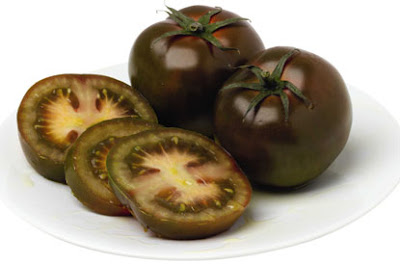You say Tomato, I say Kumato*
Sarah Darwin is a researcher (and illustrator) at the Natural History Museum in London, and also the great, great granddaughter of Charles Darwin and brother to Chris Darwin who lives in the Blue Mountains (and who had a leading role in the Charles Darwin celebrations last year).
Sarah sailed into Sydney earlier this year aboard the Strad Amsterdam, part of a re-enactment of the Beagle voyage which brought Charles Darwin to Sydney in 1836.
Sarah has just finished her PhD on the hybridisation of native and introduced tomatoes on Galapagos Islands. There are two species of tomato growing naturally on the islands, Solanum cheesmaniae and Solanum galapagense. Both are close relatives of the commercial tomato (Solanum lycopersicum) and ‘galapagense’ was named by Sarah Darwin.
The fruit of the Galapagos tomatoes is small (about a cm in diameter) and coloured yellow or orange. However many of the plants are now crossing with the plump red table tomato, resulting in lots of intermediate forms.
Sarah’s concern is the potential loss of this native species if there is too much interbreeding with the weedy tomato. Her studies have shown this is indeed what is happening and that weeds generally are a huge problem for the islands.
What is bad for the bush though, has been good for our tables. You may have seen the Kumato in our local markets – a medium-sized brown fruit. Depending on who you believe, the Kumato is the result of either an Almerian farmer inspired by some poorly watered tomato plants, or one of these Galapagos Island hybrids.
While consumers struggle with the brown colour of the Kumato, breeders say its taste makes up for its looks.
The native Galapagos species are very salt tolerant, which may be helpful if the Kumato does have this island pedigree. And as a bonus, Galapagos tortoises enjoy eating the local tomato fruits and, anecdotally, it’s said to enhance their sex life.
Image: A Kumato, from Marks & Spencers in London (c/o London Evening Standard 20 May 2009), and Kumato expert, Sarah Darwin with brother Chris, aboard the Strad Amsterdam.
*This Passion for Plants posting will also appear on the ABC Sydney website (under 'Weekends' or search 'gardening'), and is the gist of my 702AM radio interview with Simon Marnie on Saturday morning, between 9-10 am.


Comments